Have you ever heard the expression “Tomar las de Villadiego” (“Take those of Villadiego")?. In case you have not heard it, you will find the explanation here.
"Take those of Villadiego" has gone down in history as an expression of who is absent, in a hurry, to escape from risk or compromise, as many of those Jews, who in the Middle Ages were to take refuge, in the Village of Villadiego, 38 kilometres northwest of the city of Burgos.
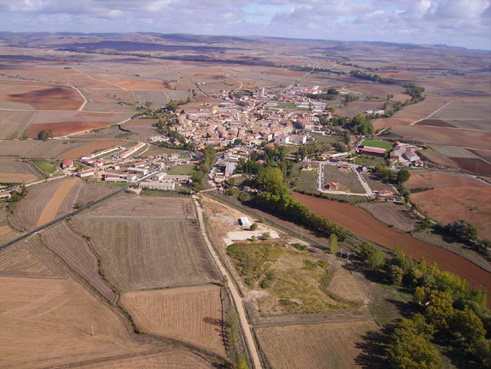
Villadiego
The Castilian town, founded by Don Diego Rodriguez Porcelos, had been privileged with a commission from Fernando III el Santo, confirmed by Alfonso X El Sabio, in 1255, which granted protection to the Jews, from the constant persecutions to which they were subjected.
"The main square, porticoed with double portals, of Villadiego is a vestige of the Jewish past of the village", says Antonio Martínez, author of the book "The happy saying: Take those of Villadiego" (Ediciones Balnea). They were, with their complaints, who led to the construction of a second arcade, in order that their potential customers could wander, in case of rain, as explained by this civil servant, native to Villadiego, who shall be 70 years old, in August, and who has spent eight years investigating the origin of the saying about his village.

Father Florez in the Plaza Mayor of Villadiego
"The fleeing has been said because the Jews took refuge, in Villadiego, because they were very persecuted for the money, that they earned with the loans", says Martinez.
In the back door of the parish church of San Lorenzo, a tablet still remembers the royal privilege with its inscription "Church of asylum". The local researcher reports that "the Jews, arrived at Villadiego, came through that door and left by the main one, with the breeches.".
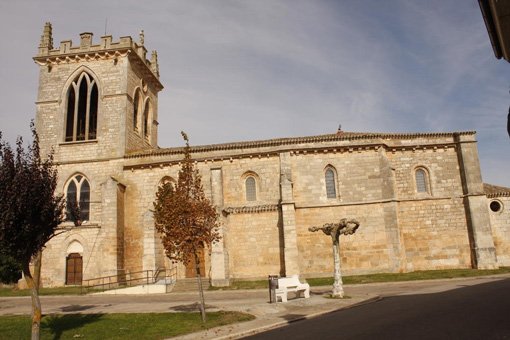
The church of San Lorenzo in Villadiego
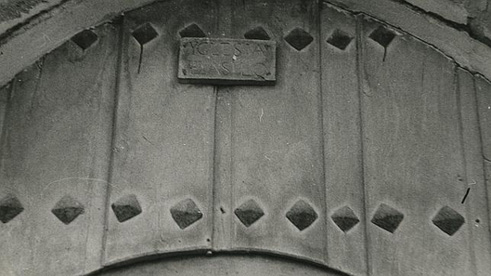
Clapboard on the door of the church of San Lorenzo
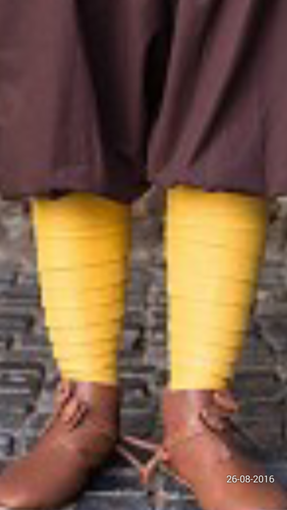
Breeches for jews in the Middle Ages
Because "those of Villadiego" refers to the breeches, that were used at the time. “Everyone was wearing them. They were like pantyhose. Those of the priests, for example, were red in color and the Jews had to wear yellow”, says Martinez, who in the book details the details of this outfit and recalls how "today we continue to use the word "stockings", for breeches that covered up to the knee”.
The coincidence, that there was a saddlebag industry in Villadiego, induced some people to think that it was these, which were taken before going out hurriedly. «If you want to know what it is to take those of Villadiego, accept any of the versions. That saddlebags are made or that espadrilles are made here. Two "articles" of travel», said Víctor de la Serna. Others speculated that the name of Villadiego would be "villa de equo", ie, of horses, with which the escape would be easier.
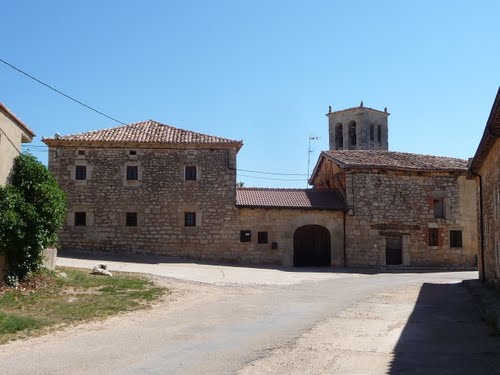
Some houses of Villadiego
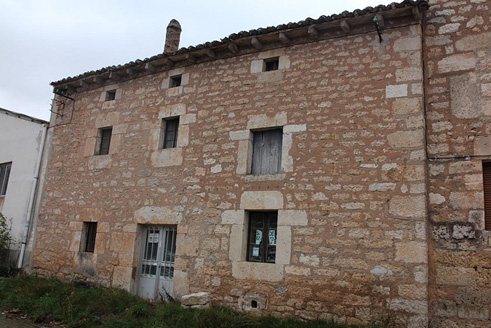
A house for sale
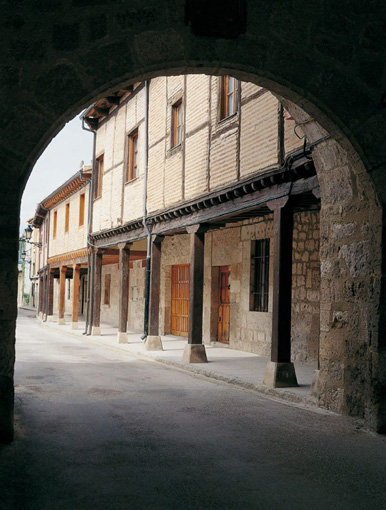
A street of Villadiego
Many people have enquired about the origin of this old saying, that Fernando de Rojas already mentions, in "La Celestina", and Miguel de Cervantes, in Don Quixote. For the priest, Luciano Huidobro Serna, who was the official chronicler of Burgos and archivist of the diocese, "what contributed most to the propagation of the phrase was the tenth", that today reads on the facade of the Town Hall: "Villadiego was a soldier; that to San Pedro, on occasion; to be in hard prison; he never failed him, on the side. The winged spirit came; and full of living fire; he says to Peter: Go on then; Take the breeches, do not argue; Pedro, for taking his ones; took those of Villadiego".
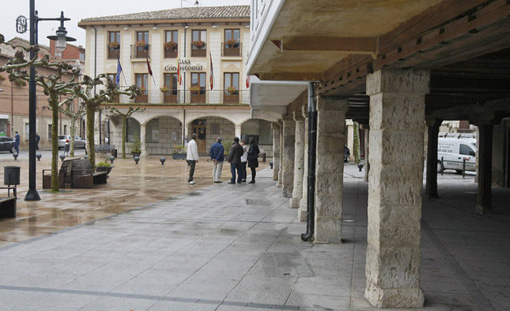
The City Hall in the Plaza Mayor

Plaza Mayor with the City Hall on the right side
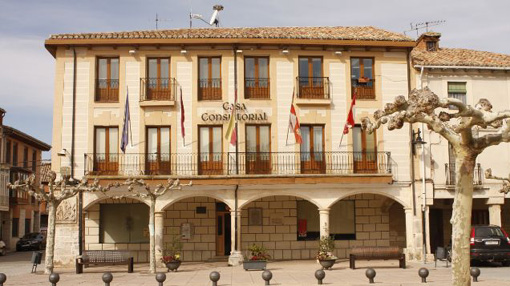
The façade of the City Hall

The famous phrase on a plaque on the left side of the façade

The plaque with the famous phrase
On the other side, a relief by Andrés Martínez Abelenda, from Burgos, depicts the liberator angel, ordering San Pedro to get ready to leave the prison and he with such haste that he mistakenly takes the breeches of the soldier Villadiego, who sleeps deeply.
«These absurd verses (because it is absurd to suppose that, in the prison of Rome, where Saint Peter was, there could be a soldier whose name was Villadiego), far from explaining the origin of such a debated phrase, they do nothing but apply it, composing a joke», says José María Iribarren, in “El porqué de los dichos” (“The cause of sayings”)».
Luciano Huidobro himself, who alluded to these verses, already related the saying with the breeches of the Jews. «Among all the opinions, the one, that seems to have some historical basis, supposes the general opinion of relating this saying, already universally known, with the existence of certain breeches, that were made in Villadiego, equal or similar to those that the Hebrews had to use flee, from one place to another, in search of refuge or hospitality", he said, in a speech, in 1953, before adding that "the obligation to wear a suit or clothes different than those worn by Christians, lasted, in Spain, until the time of the King San Fernando. And from here, that people said, when encountering a persecuted or fugitive Jew: "That one took those of Villadiego"».
The chronicler from Burgos searched, without success, documentation on this expression, in Villadiego, as Antonio Martinez has done, in recent years. "There is very little", laments the researcher, who blames the French troops, for the Napoleonic invasion of the burning of the local archives. However, he emphasises that "the breeches are true", so the version of the Jewish refugees, in Villadiego, "is the most credible".
I do not know if the chronicler from Burgos went to the Municipal Museum, in order to search documentation, about Villadiego.

The Municipal Museum
If you want to know this village personally, I recommend that you stay at the rural house, "Las de Villadiego" –but in Villalibado, near Villadiego--.
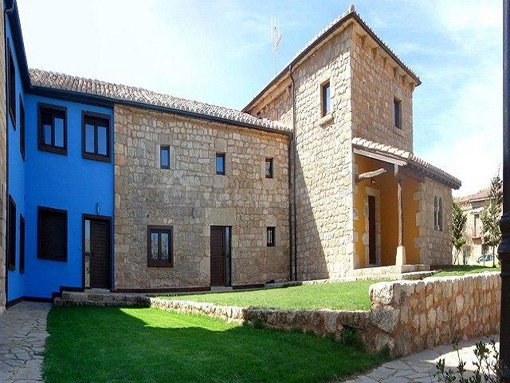
Farm house Las de Villadiego in Villalibado
Well, I hope that you will like this article about that famous expression in Spain.
Until my next post, kind regards,
Luis.
Sponsored by Costaluz Lawyers.
Please click below:
